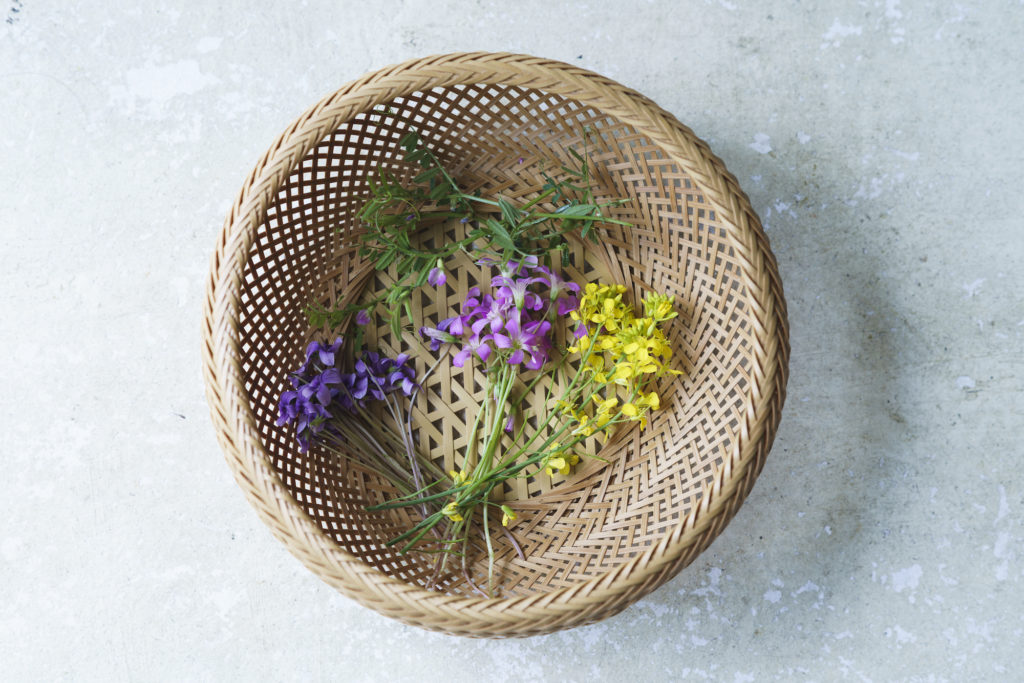
Now, let’s eat the flowers
Dandelions with flowers that mature into a fluffy seed head. Pink wood sorrels with a zesty flavor. Cockleburs that I threw in for fun, watching them stick… I was a child when I fell in love with the small flowers growing on the roadside. Though I didn’t know their names, their mere presence underfoot made me happy, and I could gaze at them for hours. Only after I became an adult did I discover that these beautiful flowers, these adorable blossoms, were unwelcome guests called weeds.
The Oxford English Dictionary defines weed as “a wild plant growing where it is not wanted and in competition with cultivated plants.”
When a plant is considered a weed, it’s sprayed with herbicides or covered with asphalt without a second thought. This breaks my heart, having seen the stems reaching for the sun and the flowers striving to bloom. What a cruel twist of fate for a plant that is only trying to live its natural life. Weeds may seem to thrive everywhere, in the city and the country, and during most of the year except in severe winter cold. But like garden flowers and vegetables, they too have a season when they are most colorful or at their peak flavor. And like cherry blossoms, quite a few flowers are in bloom for only a short time.
One of my favorite weeds is the narrow-leafed vetch. While the encyclopedia indicates it blooms from March to May, I’ve found that each flower only lasts about two to three weeks before fruit develops and the plant withers, returning to the soil. Nearby, though, different buds will be flowering, creating a patchwork carpet of color during spring and summer. Still, when I stop to admire an individual flower, closely examining its uniqueness, I marvel that this particular encounter will never again be replicated in my lifetime.
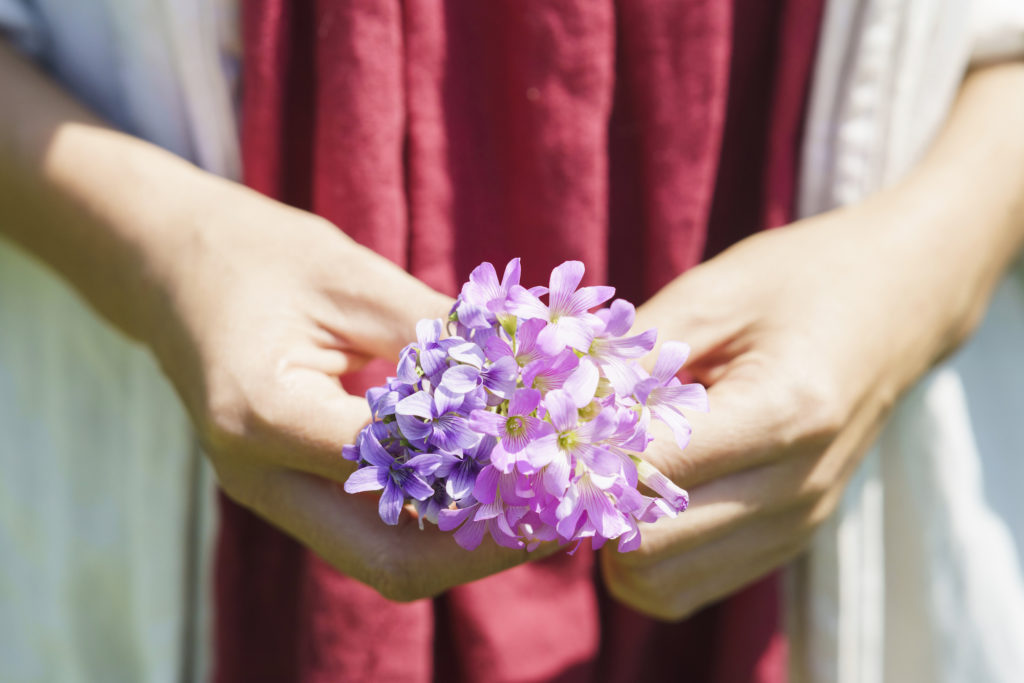
When the next flower season arrives, try taking a short trip to the field, the riverbank, or the riverbed. Gather the flowers growing in the wild and make a dish of flower kakiage or a new style of mixed tempura.
We eat most plant organs—the leaves (leafy greens), roots (root vegetables), seeds (spices and cereals), and buds (broccoli and so on)—but we seldom eat the flowers. The ancient Chinese proverb Ichibutsu Zentai tells us to eat foods whole. Respect life by not letting any part go to waste. Consuming it whole is better balanced and better for your body. Having said that, it’s quite a challenge to eat a plant in its entirety. What we can do instead is eat a well-balanced meal consisting of all parts—leaves, roots, buds, seeds, and flowers.
Since the sight of flowers lifts our emotional spirits, we shouldn’t be surprised that eating flowers also increases our physical vitality.
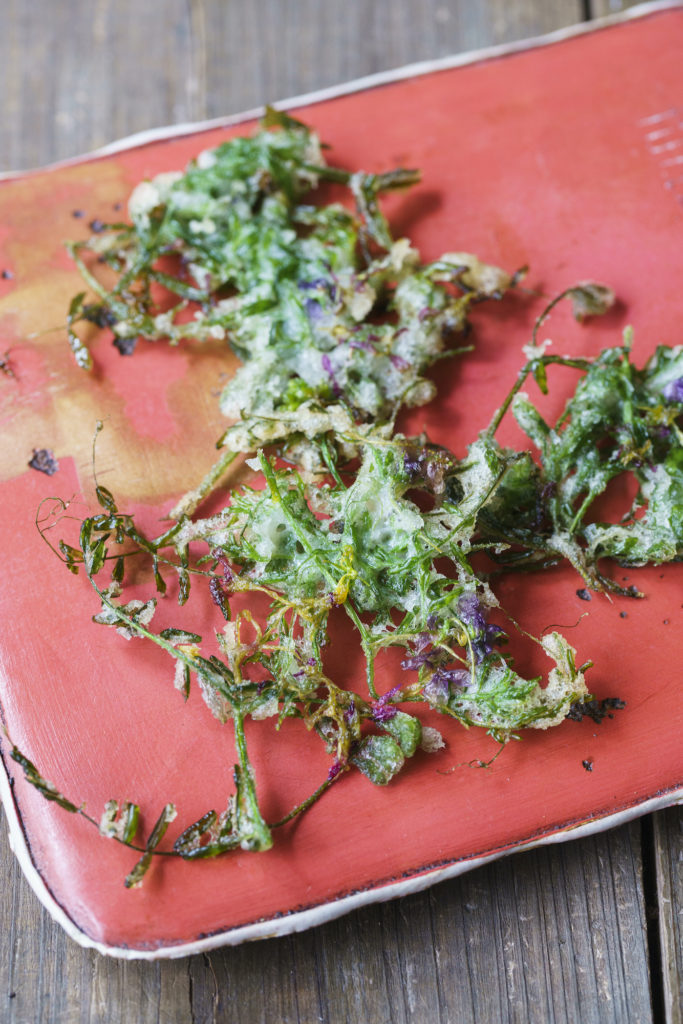
■Grass on the Plate Recipe 01
Flower kakiage
Ingredients
Narrow-leafed vetch, pink wood sorrel, leaf mustard, Manchurian violet, wheat flour produced in Japan, water, rapeseed oil, natural salt
Directions
1. Gather the soft stems of the narrow-leafed vetch. Be sure to pick flowers in season.
2. Mix equal parts flour and water (keep the batter light for a crisp tempura) and add the narrow-leafed vetch.
3. Heat the oil in a skillet and add a small handful of narrow-leafed vetch. When one side is crisp, turn it over. For best results, spread the leaves out to eliminate layering and create a thin sheet. Deep fry slowly over low heat.
4. Just before the other side is crisp, top with the flowers to finish. Flowers brown quickly, so timing is essential.
5. Sprinkle with salt and enjoy.
■Plants Index
Weeds in this story
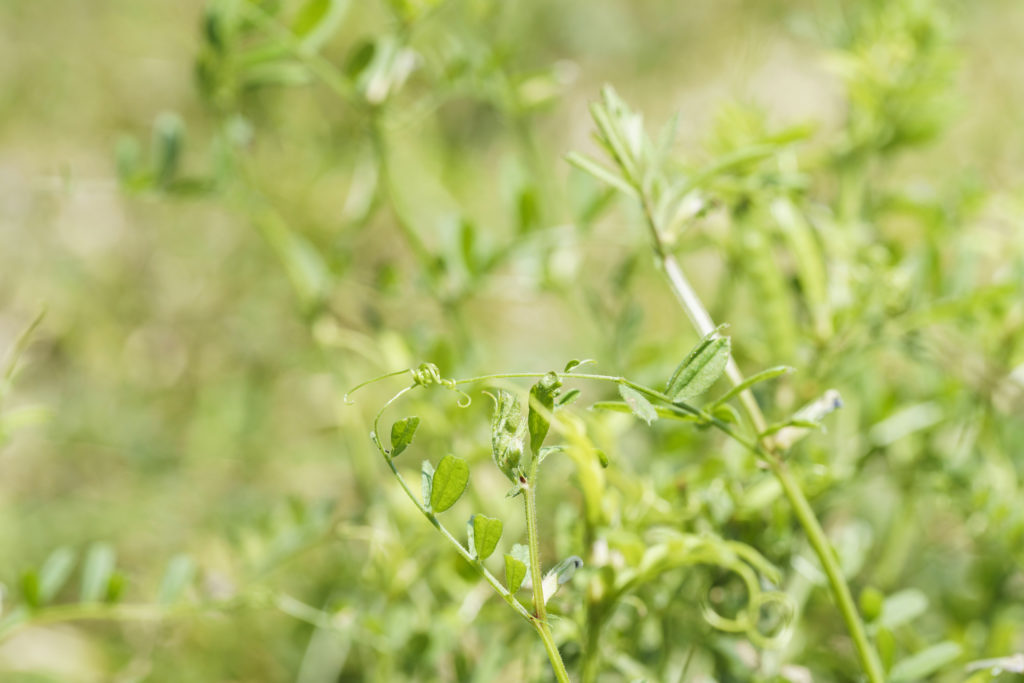
The narrow-leafed vetch produces pale fuchsia butterfly-shaped flowers about 8 millimeters long from March to May. The flowers develop into pea-sized fruit that when ripe turns black like a crow, hence the name karasu-endo, or “crow pea” in Japanese. The tendrils twine around objects to support the plant in the wind.
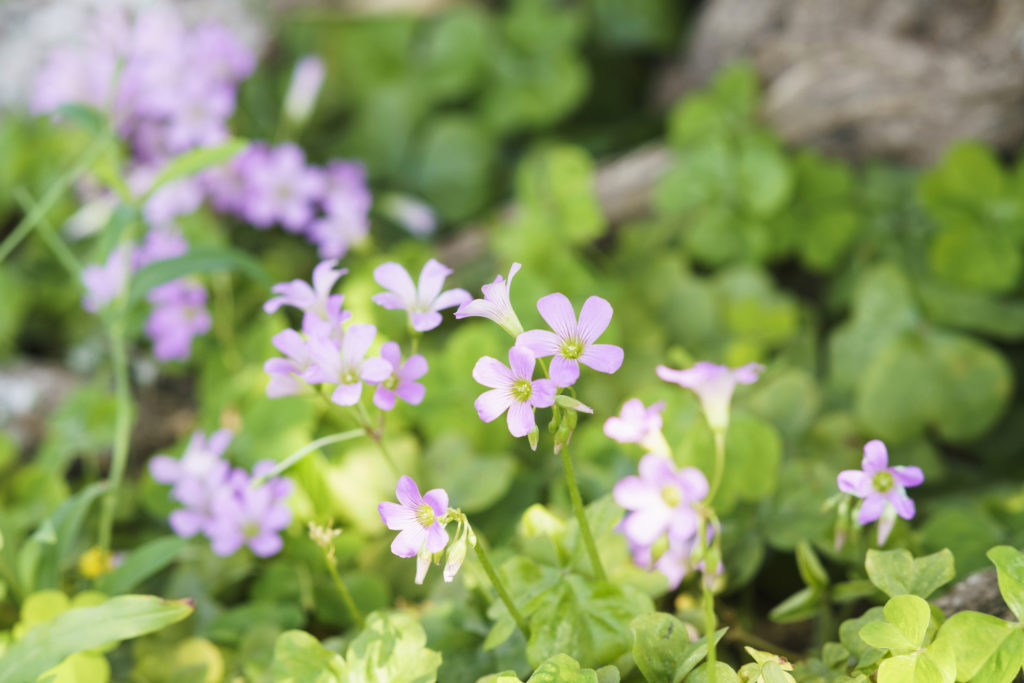
Imported from Europe in the Edo period (1603–1868) as an ornamental plant, the pink wood sorrel proliferated on the roadside, in vacant lots, in the fields—everywhere—and came to be considered a weed. The flowers and leaves fold up and close at night and on cloudy days to conserve energy. Flowers bloom in the pleasant seasons of spring and autumn.
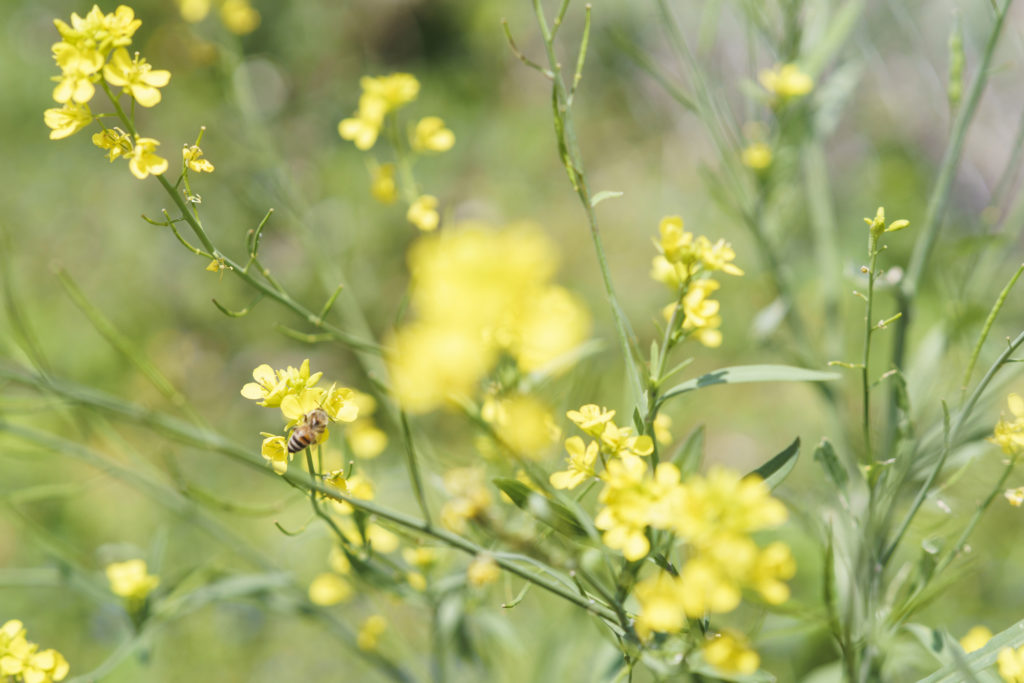
The Eurasian leaf mustard was naturalized after being cultivated for its seeds, which are used to make mustard. The flowers bloom in spring and provide a precious source of nectar for honeybees. The leaves are good chopped, rubbed with salt, and served with rice or added to fried dishes or miso soup. While the plant was originally cultivated, it now grows wild throughout Japan, from Okinawa to Hokkaido.
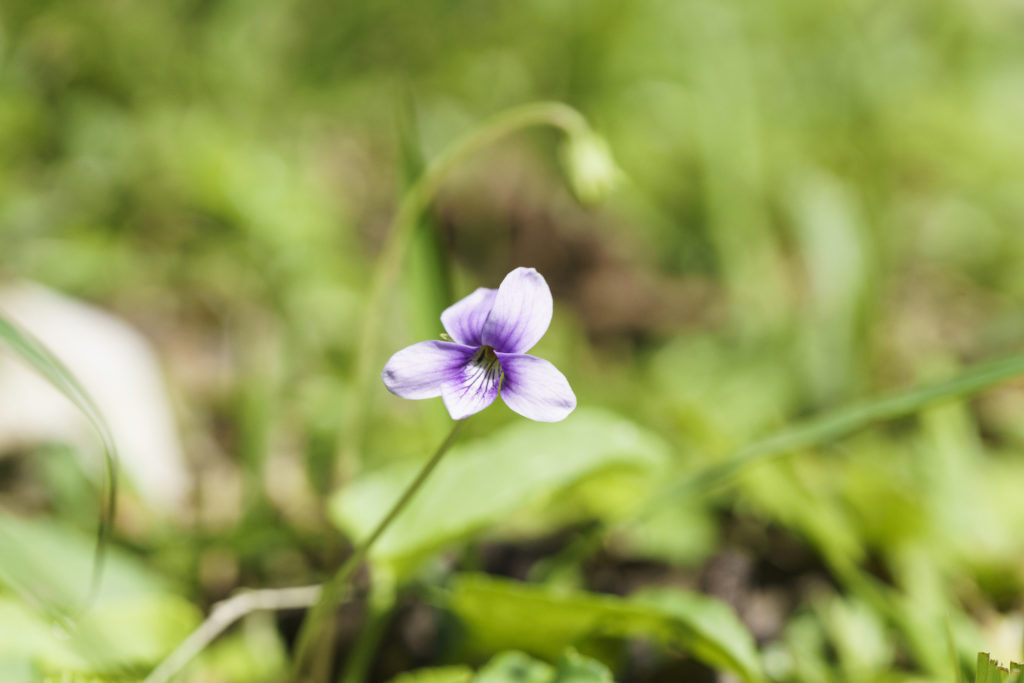
The seeds of the Manchurian violet have an oily coating that controls sprouting and that also attracts ants that disperse the seeds. While the seeds were used in ancient Greece and Rome to treat heart ailments, today we sprinkle them on a salad or serve them in a glass of water for a jolt of energy!
Yoco Kawashima
As a child, Kawashima nurtured her love of “weeds” into a passion for soil and water. Guided by these memories in 2000 she began artistic activities focused on weeds, traveling to study how they are used. She then expresses their attraction in various forms such as food, drink, decoration, and therapy. Publications include Kusa to kurasu (Living with Weeds; Seibundo Shinkosha). Kawashima lives in Okinawa Prefecture.











